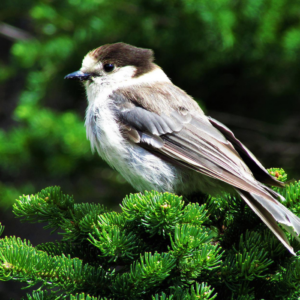Government announces protections for 27 bird habitat islands outside Montreal— One small step in a larger challenge to protect nature
Environment and Climate Change Canada announced that it will be protecting 27 small islands in the St. Lawrence River, from Montreal to Trois Rivières, Quebec. Close to one of Canada’s most populous cities, the island ecosystems on the St. Lawrence support bird life but face many environmental risks.
What does this mean for nature?
The St. Lawrence is the largest river in North America – just ahead of the Mississippi for volume of water discharged. From Kingston, at the east end of Lake Ontario, to Sept Isle Quebec, in the Gulf of St. Lawrence, it drains nearly one million square kilometres of land.
It is also a busy place for humans. About 30 million people live in the Great Lakes Basin. Montreal, a city of about 3.5 million people, is the largest urban area along the St. Lawrence. The city is located on a series of islands near the confluence of the St. Lawrence and Ottawa Rivers.
These islands, within the nutrient-rich waters of the St. Lawrence, provide rich habitat for birds, fish and other wildlife. There are eight Important Bird and Biodiversity Areas (IBAs) within the urban area of Greater Montreal that supports high numbers of waterfowl and several bird colonies.
The Environment and Climate Change Canada announcement includes protection for 27 islands in total, adding up to 800 hectares.
Islands to be protected in the St. Lawrence on the northeast side of Montreal include les Îles de Varennes et de Verchères and les Îles de Boucherville.
While only one of these islands is an IBA, they support populations of species at risk including Short-eared Owl, Bank Swallow, Least Bittern and Bobolink.
Further downstream, the St. Lawrence widens into lac Saint-Pierre. At the entrance to the lake is an archipelago of islands, seven of which are included in the Environment and Climate Change Canada proposal.
Four IBAs are recognized in and around Lac St. Pierre. These sites are important for waterfowl including Snow Goose, Canada Goose, Black Scoter and species at risk such as Least Bittern and Rusty Blackbird. One of the largest Great Blue Heron colonies in North America is located on la Grande Ile, a provincial nature reserve. It is not clear if the new sites include or overlap with existing IBAs.
Our Take On This Announcement
Nature Canada is pleased with this announcement and the government’s initial progress to protect key areas. Unfortunately, it is just one piece of the puzzle; more is needed to protect the wildlife of these islands from multiple threats and restore the surrounding ecosystem.
The St. Lawrence Seaway, which passes near these new protected areas, is a major shipping canal. In 2018 there were 4389 transits, carrying, among other things, 3,210,848 tonnes of petroleum products and 839,210 tonnes of chemicals.
Maintaining the passage through Lac Saint-Pierre requires addressing a number of pressing issues that undermine the ecology of the lake.
These include dredging of sediments to keep the sea lanes open to ensure safe transit of cargo. Dredging has damaged and destroyed fish and mollusk habitat and released chemicals and heavy metals into the water, exceeding safety limits. These chemicals work their way into the food chain and end up in birds, fish and humans.
Intensive agricultural operations around Lac St. Pierre releases fertilizers and other chemicals into the lake’s numerous tributaries resulting in serious pollution issues. The drainage of wetlands around the lake have also resulted in habitat loss.
It is clear that protecting a group of small islands in this part of the St. Lawrence is a small step towards protecting biodiversity. All levels of government, NGOs, and private business need to step up to address the bigger contextual issues if this announcement of new National Wildlife Areas is to have a long-term positive impact.



